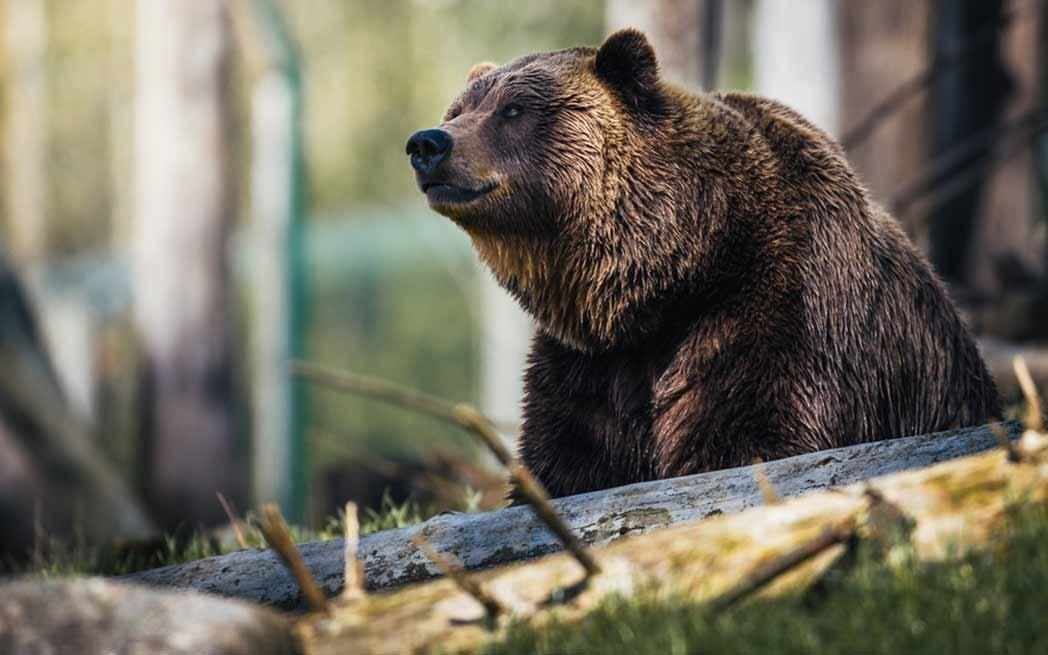Nature conservation:
Dominion vs. stewardship
Traditional and new age conservationists at odds
By Georges R. Dupras
May 25,2019
Note: This article reflects the opinions of the author and does not necessarily the opinions of any other persons mentioned.
Changes to benefit biodiversity are an uphill battle made more difficult because of anthropocentrism, economics and politics. Adding to the mix is the political corruption of field terminology.
The origin of “traditional conservation”
In the mid-nineteenth century, the first efforts at conservation in North America were undertaken due to the widespread destruction of wildlife, notably shore birds. Hunters, responding to a growing demand for fashion plumes, killed thousands of birds without considering the environmental impact.
President Theodore Roosevelt, for whom stuffed toy bears were named (teddy bears), has been credited as one of the first American conservationists. Among his noted accomplishments was that he set aside large tracks of land that would become the United States’ first wildlife reserves.
Personal vision
This initiative, based on the President’s personal vision of conservation, lay the groundwork for two very different definitions of true conservation – consumptive versus compassionate.
It is said that the 26th President visited only one of these refuges and, on that occasion, he dug up turtle eggs and ate them for lunch. He then argued that raccoons should be exterminated in areas classified as reserves in order to protect birds and the very turtles he was consuming.
President Theodore Roosevelt… set aside large tracks of land that would become the United States’ first wildlife reserves. This initiative… lay the groundwork for two very different definitions of true conservation – consumptive versus compassionate.
During the 1800s and early 1900s, California’s brown bears were also being exterminated6. The last California Grizzly was shot and killed by a hunter in 1922. Today, you would be hard-pressed to find a grizzly bear anywhere in California other than in a zoo, or on their state flag. As for wolves… best not go there.
Battle cry
The conservation battle cry was, and remains, to “exploit to protect”. This approach was carried out at the expense of non-capital species8 as well as the many people who see conservation differently. Regrettably, this dated and failed approach2 still permeates hunting interests in rural areas and, as a result, it significantly influences decisions made by those seeking political returns. Management programs are still focused on the regulation of game species through hunting, trapping and fishing.
The data from which quotas were established was collected by the very people who benefited from these activities. In many cases it was based on best estimates, inaccurate counts and gender reporting, skewed, falsified or no data whatsoever. As an example, when a lactating bear was killed during spring hunts, no account was taken of the number of cubs who were left to die by starvation or predation (between two to four).
‘The conservation battle cry was, and remains, to “exploit in order to protect”… Management programs are still focused on the regulation of game species through hunting, trapping and fishing.’
The same can be said of killing an alpha lion or wolf. When those individuals are killed, another male takes over the dead animal’s pride/pack and kills off the previous male’s progeny. These deaths went unrecorded. Regrettably, not much has changed today.
Point of demarcation
Conservation is still focused on the preservation of the species. It maintains the fundamental beliefs of the “consumptive model” and has become even more politicized.
Further to critical scrutiny of official data by those seeking a new non-consumptive approach, a point of demarcation was created. This gave rise to a division between urban and rural views. This gap widened when only interests having an economic stake in wildlife management were invited to take part in Federal and Provincial policy reviews. It came to a head when those arguing the status quo were unable to counter-cultural, economic or scientific arguments. They resorted to personal attacks on those offering a different view rather than concentrating on the substance of the argument itself (ad hominem).
Canadian author Farley Mowat (Never Cry Wolf) was an example of a storyteller who allowed for poetic license while maintaining the essence of reality. He was a wonderful writer and lover of nature. His goal was to bring the average man closer to the natural world through his work. Though his research was thorough, he came under attack for his use of poetic license.
‘Canadian author Farley Mowat… was an example of a story teller who allowed for poetic license while maintaining the essence of reality.’
Working together
In the 1960s, efforts were made by some animal advocates to work with industry to address areas of concerns that divided these two solitudes. This they did through the efforts of Neil Jotham, then National Director of the Canadian Federation of Humane Societies (CFHS). These endeavours were disappointing when it became obvious that the only significant changes that the animal industries were willing to discuss were the “attitudes” of those advocating change.
Still today, in his town hall meetings, when asked why little has been done to protect animals, our Prime Minister, Justin Trudeau, states that animal advocates should work with industry. As for myself, I suggest that the Prime Minister, who claims to be a teacher3, should do his homework.
“Exploit in order to protect” model
One of the problems with the “exploit in order to protect” mantra appears to be that there is a flagrant conflict of interest4. Another is that political conservation undermines true science while completely ignoring “empathy”, one of the fundamental traits that define humans.
Alternative paradigms
It has been argued that compassionate conservation, a term coined by Marc Bekoff, a cognitive ethologist, is lacking in pragmatism. It became a red flag when it challenged the traditional dismissal of the well-being of animals in general, wildlife and agriculture in particular.
‘One of the problems with the “exploit in order to protect” mantra appears to be that there is a flagrant conflict of interest.’
This alternative approach has adopted a fundamental principle of the Hippocratic Oath which is, first, do no harm (primum non nocere). Oddly enough, there is nothing new about the approach itself. It is one that is tested and was first advanced by theologians who argued that the individual, in this case human, mattered5.
Traditional conservationists believe that, along with managing nuisance species through culls, poisons, trapping, areal shootings and bounties, it is an effective environmental practice to sacrifice the individual to protect the collective (weekend hunting). Harvesters9, as they now call themselves, also argue that trophy hunting is an economic conservation tool and, along with fishers, share a unique definition of “sustainability” that counters the most basic interpretation11. The economic justification lacks support as shown in a report by Australian economists entitled Economists at Large7.
The report demonstrates that ecotourism brings in considerably more money, without destroying the resource that attracted the tourists in the first instance. The independent report, along with other studies, confirms that sums of money accrued through eco-tourism remains in the communities that promote live safaris, while hunting profits overwhelmingly benefit foreign interests6.
The new age conservationist believes that if you protect the individual, the collective will protect itself. They do not see animals as resources to be managed as capital units. They argue that no real advancements will be made in conservation unless protection is all-inclusive. A first step in attaining this objective might be to reverse the listings of CITES10.
‘We cannot rely on science to solve the loss of biodiversity, ecosystems, and climate change, when the real problems are human greed, selfishness and self-proclaimed superiority.’
Traditional management officials promote their objectives as beneficial for biodiversity, ecotourism and the protection of endangered species. This argument is in fact subordinate to the main purposes of the traditional paradigm.
Dr. William Lynn of Clark University5 believes that this approach is often based on the belief that the earth was created for our use and that non-humans and nature are simply god-granted resources (Dominionism). This belief is also reinforced by anthropocentrism, the claim that humans are the only morally valuable creatures on earth. To challenge this credo is to rock the very foundation of traditional conservation.
“What we are” should not change “Who we are”
For real change to occur, and assuming we want to change, we must accept that we are part of a greater canvas, no better, no worse than others who share our world.
Without throwing out all our gains, we must recognize that capitalism alone isn’t the solution to a world of wars, poverty, injustice and abuse. We cannot rely on science to solve the loss of biodiversity, ecosystems, and climate change when the real problems are human greed, selfishness and self-proclaimed superiority.
- The Bible is possibly the most translated book of scriptures in the world (670 languages and the New Testament alone in 1,521 languages). While the King James version uses the word “Dominion” there are those who argue that the correct translation should read “Stewardship”.
- Over the past 50 years, the world has lost 60% of its known wildlife. The Convention for International Trade in Endangered Species (CITES) has existed for 45 of those 50 years and “exploit” to “protect” is the cornerstone of their existence.
- The Prime Minister was a part-time drama teacher in a grade school for a short period.
- In the same way, a lawyer cannot both prosecute and defend a suspect in a criminal trial, CITES should not both exploit and protect a species simultaneously.
- Excerpts from Dr. William Lynn of Clark University, The George Perkins Marsh Institute and Dr. John Hadidian, Virginia Polytechnic Institute and State University, Center for Leadership in Global Sustainability. (Bridging the Divide Between Animal Protection and Traditional Conservation Biology)
- Bear baiting was popular during those years and pitted bears against bulls to see which would survive. It is believed that it still exists today in some remote areas of the world.
- Information drawn from Economists at Large, a Melbourne Australia-based consulting economists firm. Report dated 2013. Report commissioned by the Humane Societies of the United States.
- Wolves, seals, cormorants etc.
- Harvest is a German word that refers to harvesting crops that have been planted. The definition of crops does not include sentient beings.
- Reversing the CITES listing was first suggested during the second meeting of the Parties without success.
- A very basic definition of sustainability would include the following: numeric sustainability, genetic sustainability, ecological sustainability, range & environmental impact.
Feature image: Janko Ferlic from Pexels
Other articles by Georges R. Dupras
More recent articles from WestmountMag.ca

Georges R. Dupras has advocated for animals for over fifty years. A member of the International Association for Bear Research and Management (IBA) and a past Board member of the Canadian SPCA, he worked on the original Save the Seal campaign in 1966 that culminated in the foundation of the International Fund for Animal Welfare (IFAW) in 1969. Georges Dupras has published two books, Values in Conflict and the eBook Ethics, a Human Condition, and currently lives in Montreal, Canada.



George Dupras is correct when he says that “science” cannot solve the problem of loss of
bio-diversity. And we cannot assume our Government leaders will care either since they
pander to the interests of farmers, ranchers, hunters, etc. Maybe our leaders will notice
though if voters identify the environment as a key voting issue.
A very compelling argument. I totally agree with the last paragraph – greed, selfishness and Dominionism are destroying this beautiful planet and all who share it. As for Justin Trudeau, he has made many statements and promises, all seem to be self-serving and never advancing the causes he claims to espouse. I regret believing his election plank.